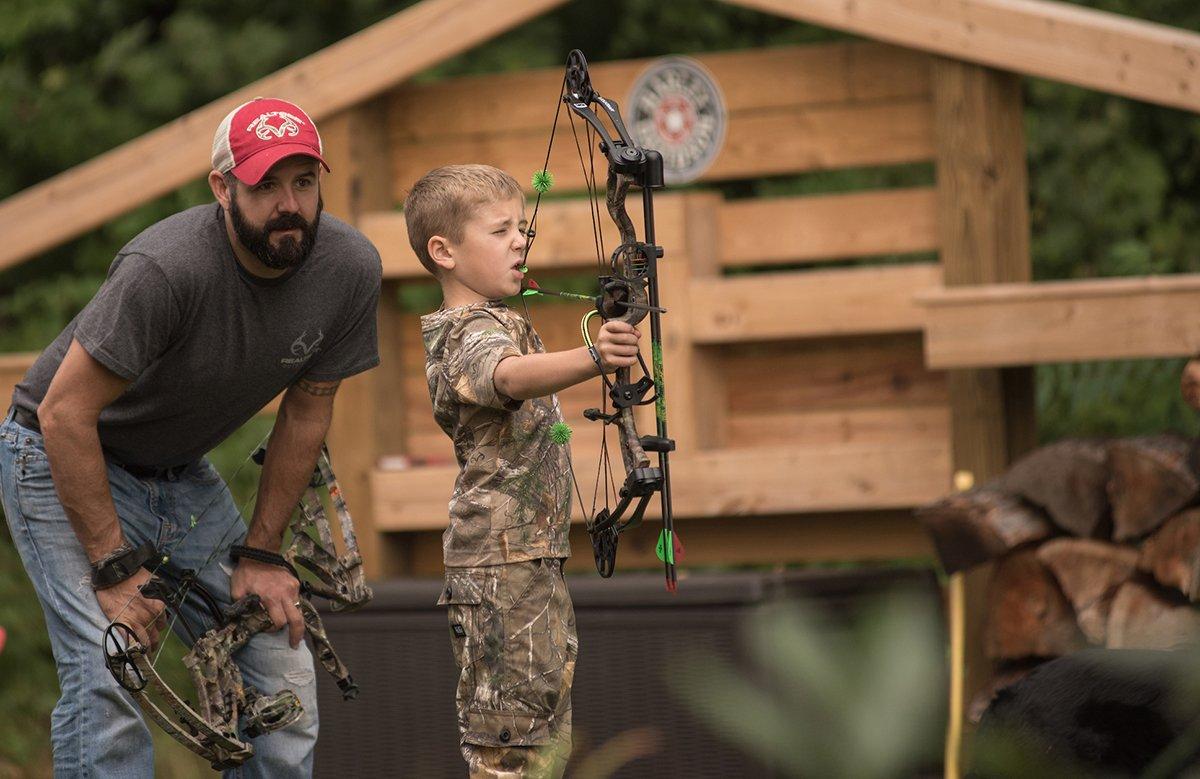What Is the Right Age?
It doesn't take long to notice that archery manufacturers are targeting youth with more and better equipment than ever before. Today's youth bows feature a wide range of draw length and weight adjustments, and compact sizes that are perfect for younger shooters. Let off percentages on many of these bows approach 80 percent, allowing even small-framed hunters to pull heavier draw weights than ever before. Couple all of this with modern, super-efficient cams, and these youth bows are more than capable of effectively taking most large game animals.
So what are a few of the things to consider for a beginning bowhunter?
State Laws
Many states set a minimum age for hunters. Check with your state wildlife agency for any age requirements. Some states also require completion of a Hunter Education Course for young hunters. Plan ahead and check listed class dates for your area so that you don't get caught needing an orange card when the season finally comes in.
Kinetic Energy
Kinetic Energy (KE) is the amount of energy contained in the moving arrow. The heavier the arrow and the faster it moves, the more kinetic energy it contains. Easton Archery recommends a minimum of 25 pounds of KE for medium-sized large game. Most of today's bows with a draw weight of 35 pounds or more and a draw length of 24 inches or greater more than cover the 25-pound KE minimum. To get the maximum KE energy for any given setup, use arrows that are heavy for their small diameter like the Easton Full Metal Jacket or the Victory VAP.
Broadhead Choice
To maximize every bit of the available kinetic energy, pick a fixed blade broadhead with a sharp, cut-on-contact style tip. Heads like the Muzzy Phantom SC, G5 Montec, and Carbon Express F-15 lead with a sharp, narrow tip that begins slicing immediately upon contact. These heads lose less KE than heads with blocky or round tips as they pass through a deer's skin.
When picking a head for a low KE setup, avoid expandable broadheads. Low-poundage bows don't always have enough energy to both open the head and drive it through the animal, resulting in shallow penetration.
Experience
Bowhunting is all about getting close to an animal. When hunting with my kids, I like to limit shots to 20 yards or less. Getting that close to an animal requires extreme quiet and stillness, two things that beginning hunters aren't known for. Make sure your hunter is prepared by spending time outdoors, in hunting conditions, as often as possible. Make a game of who can be still and silent the longest. A well brushed blind covers a lot of movement when the moment of truth arrives.
While it is hard to gain the experience of actually shooting at an animal, archery courses featuring life-sized 3D targets are a great way to practice with young or beginning archers. The anatomically correct targets force the shooter to pick a spot and allow post-shot reviews of placement. Spending time shooting 3D targets at unknown yardages is the best way to prepare for actual hunting conditions.
So when is the right time? The answer depends on the hunter. If you think your child is old enough, and they meet all age requirements in your state, then head on over to your local archery shop and get them fitted for a quality youth bow and necessary gear to make it an effective hunting tool. Get out and practice until you are confident they are capable of making the shot, then hit the woods in search of their first archery deer.
Click here for more deer hunting articles and videos.
Check us out on Facebook.









